
Alfred Gabriel Nathorst was a Swedish Arctic explorer, geologist, and palaeobotanist.
Alfred Karl Meebold was a botanist, writer, and anthroposophist.
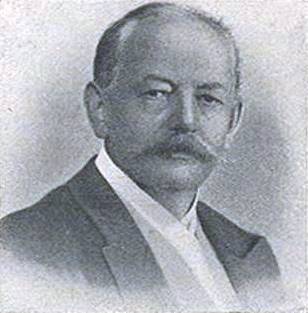
Heinrich Gustav Adolf Engler was a German botanist. He is notable for his work on plant taxonomy and phytogeography, such as Die natürlichen Pflanzenfamilien, edited with Karl A. E. von Prantl.
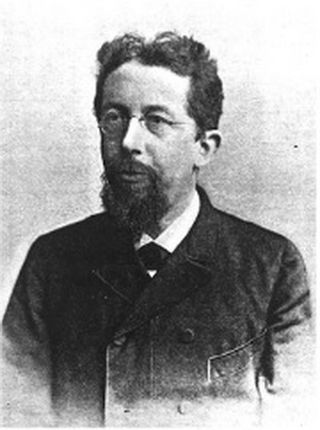
Karl Moritz Schumann was a German botanist.

The Berlin Botanic Garden and Botanical Museum is a botanical garden in the Lichterfelde locality of the borough of Steglitz-Zehlendorf, Berlin, Germany. Constructed between 1897 and 1910 under the guidance of architect Adolf Engler, it has an area of 43 hectares [ha] and around 22,000 different plant species. The garden is part of the Free University of Berlin.

The Field Elm cultivar Ulmus minor 'Hoersholmiensis', Hoersholm elm, originated from seed sown at the Hørsholm Planteskole, Denmark, c. 1885, where it was propagated by the nursery proprietor Lars Nielsen. The Späth nursery of Berlin, however, which marketed 'Hoersholmiensis' in the interwar period, considered it a hybrid rather than a form of field elm, a view shared by Christine Buisman, who in 1931 labelled a herbarium specimen from a Späth-sourced tree in The Hague as a form of Ulmus × hollandica.

The Wych Elm cultivar Ulmus glabra 'Cornuta', in cultivation before 1845 – Fontaine (1968) gives its provenance as France, 1835 – is a little-known tree, finally identified as a cultivar of U. glabra by Boom in Nederlandse Dendrologie 1: 157, 1959.
The elm cultivar Ulmus 'Lombartsii' is considered "possibly Ulmus × hollandica or Ulmus carpinifolia " by Green (1964). The tree was raised by Lombarts Nurseries at Zundert, Netherlands, circa 1910.
The Wych Elm cultivar Ulmus glabra 'Pendula Macrophylla', was first mentioned by Maxwell ex Journal of the Royal Horticultural Society 18: 91, 1895, as U. montana var. pendula macrophylla, but without description.
British NVC community OV20 is one of the open habitat communities in the British National Vegetation Classification system. It is one of six communities characteristic of gateways, tracksides and courtyards.

Actinokentia is a genus of flowering plants in the family Arecaceae, comprising two species, both indigenous to New Caledonia. Relationships between Actinokentia and the other genera of subtribe Archontophoenicinae, including the Australian Archontophoenix and the New Caledonia endemic Chambeyronia and Kentiopsis are unresolved.

Julius Oscar Brefeld, usually just Oscar Brefeld, was a German botanist and mycologist.
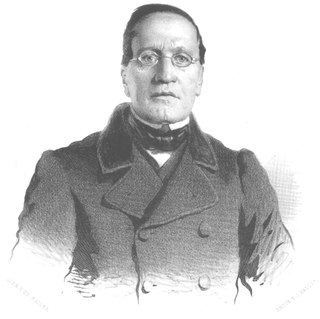
Christian Casimir Brittinger was a German botanist, entomologist and ornithologist.
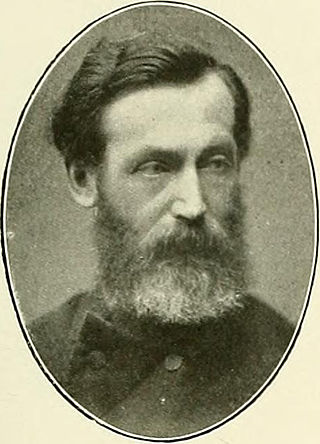
Ferdinand Christian Gustav Arnold was a German lichenologist and taxonomist born in Ansbach, Bavaria. Even as a high school student he showed an active interest in botany: "Ich und August Gattinger ... durchstreiften von November 1846 bis zum Spätherbst 1847, Pflanzen sammelnd, die Landschaft von München nach allen Richtungen.".
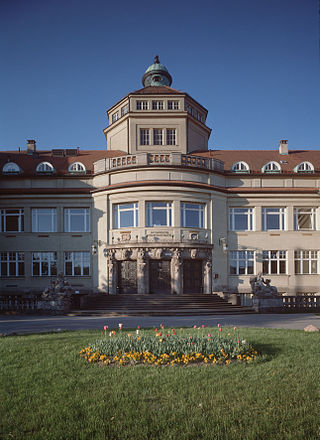
The Botanische Staatssammlung München is a notable herbarium and scientific center maintained by the Staatliche Naturwissenschaftliche Sammlungen Bayerns. Its building is located within the Botanischer Garten München-Nymphenburg area at Menzinger Straße 67, München, Bavaria, Germany. A center for data science and biodiversity informatics called SNSB IT Center is affiliated. Its library is open to the public; scientific collections are open to researchers by appointment.

Zigetangcuo Lake is a crenogenic meromictic lake in the North Tibetan Plateau. It is located in Nagqu Prefecture, north of Dongqiao. It has an area of 187 square kilometers at an altitude of 4560 meters. It is the meromictic lake with the highest known altitude.

The Lilioideae are a subfamily of monocotyledonous perennial, herbaceous mainly bulbous flowering plants in the lily family, Liliaceae. They are found predominantly in the temperate and colder regions of the Northern Hemisphere, particularly East Asia and North America. The subfamily includes two tribes. They are of economic importance, particularly the lilies and tulips.
Plant Systematics and Evolution is a biannual peer-reviewed scientific journal covering systematic botany and evolutionary biology. The editors-in-chief are Marcus A. Koch, Martin A. Lysak,, and Karol Marhold.

Epimetopidae is a family of semi-aquatic beetles belonging to the Hydrophiloidea. They are found in sand and gravel at the edges of streams, rivers and shallow freshwater ponds. These beetles are shorter than half a centimeter long and have a pronotum with a central projection forming a shelf above the head. On the underside of the abdomen only four sternites are visible. There are approximately 72 described species in three genera, Epimetopus which is restricted to the New World, mostly Neotropical, Eupotemus with two Afrotropical species and Eumetopus with some Oriental species. Females carry their eggcases on the underside of the abdomen. The larvae are probably carnivorous based on their mouthparts and likely live in the same habitats as the adults.
The Regensburg Botanical Society, founded 1790 in the city of Regensburg, Bavaria, Germany, is the oldest extant scientific society focused on botany. It was initially supported by the Prince-Archbishop Karl Theodor von Dalberg of Regensburg. Over the centuries the society has held scientific meetings, published scientific journals and had a botanic garden, herbarium and library. In the twentieth century the society extended its role into nature conservation. It currently collaborates closely with the University of Regensburg.













